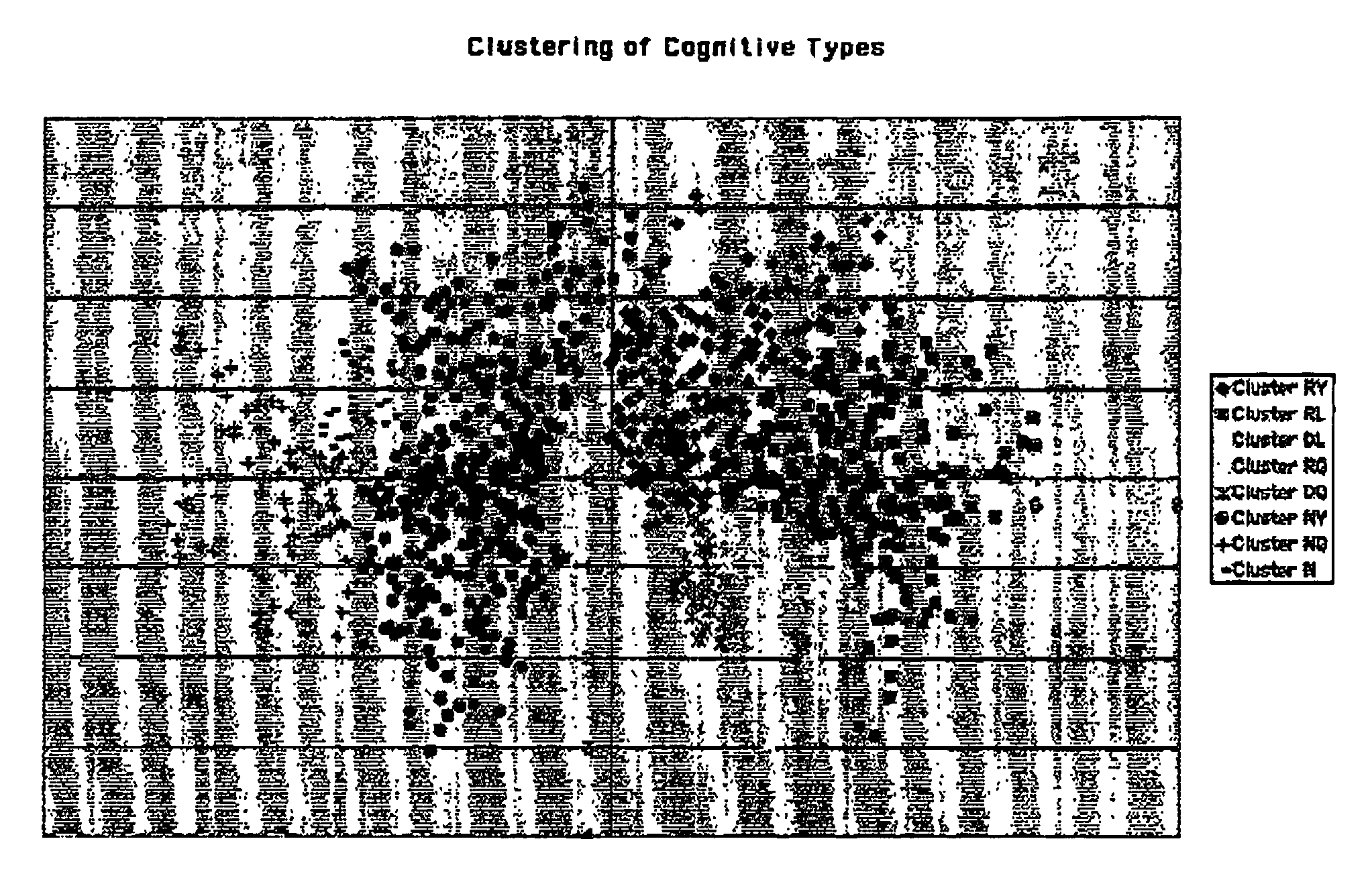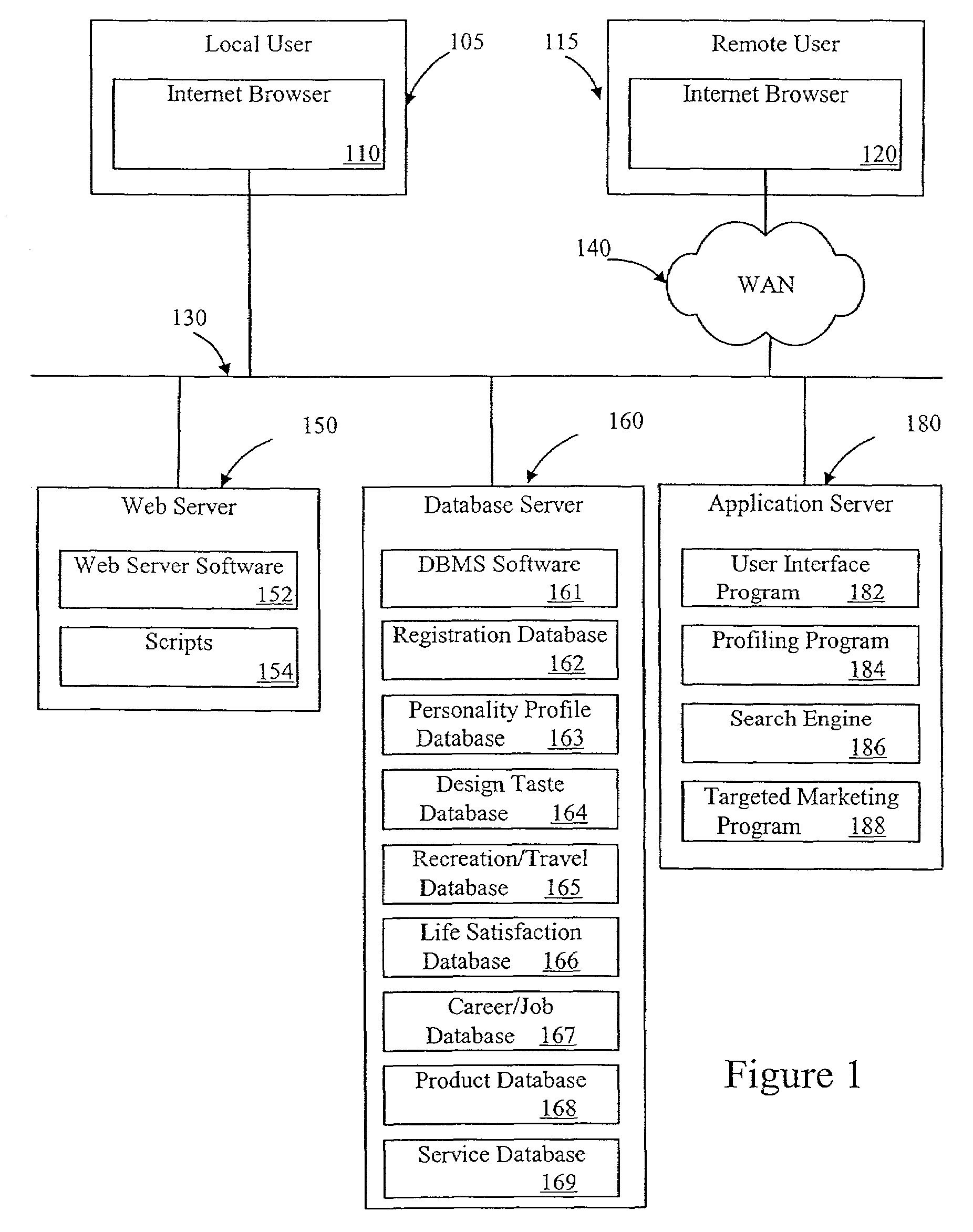System and method for using psychological significance pattern information for matching with target information
a psychological significance and target information technology, applied in the field of computer-implemented systems, can solve the problems of increasing unease regarding the use of such psychological tools, unease may arise, third-party companies using personality profiles, etc., and achieve the effect of alleviating the issue of unsolicited marketing communications
- Summary
- Abstract
- Description
- Claims
- Application Information
AI Technical Summary
Benefits of technology
Problems solved by technology
Method used
Image
Examples
Embodiment Construction
[0062]The following detailed description illustrates the invention by way of example, not by way of limitation of the principles of the invention. This description will clearly enable one skilled in the art to make and use the invention, and describes several embodiments, adaptations, variations, alternatives and uses of the invention, including what we presently believe is the best mode of carrying out the invention.
[0063]The invention will be described by way of illustration with reference to a specific psychological testing method, referred to as a Personality Trait Topography (“PTT”), but it should be understood that other psychological testing tools and profiling methods may also be employed in the present invention. Furthermore, although the customer input and actions described refer to inputs from a keyboard or a mouse, this invention also covers other interfaces such as those using voice or a touch screen. Similarly, the specific computational methods and correlation schemes...
PUM
 Login to View More
Login to View More Abstract
Description
Claims
Application Information
 Login to View More
Login to View More - R&D
- Intellectual Property
- Life Sciences
- Materials
- Tech Scout
- Unparalleled Data Quality
- Higher Quality Content
- 60% Fewer Hallucinations
Browse by: Latest US Patents, China's latest patents, Technical Efficacy Thesaurus, Application Domain, Technology Topic, Popular Technical Reports.
© 2025 PatSnap. All rights reserved.Legal|Privacy policy|Modern Slavery Act Transparency Statement|Sitemap|About US| Contact US: help@patsnap.com



